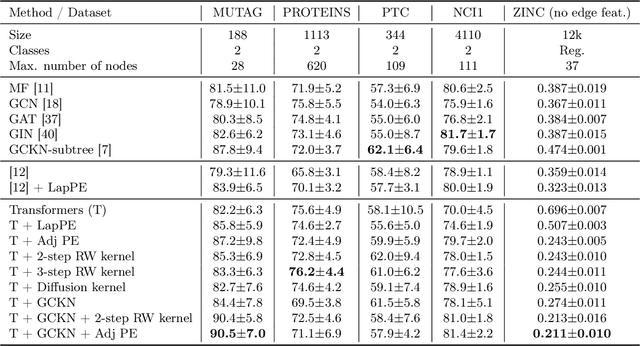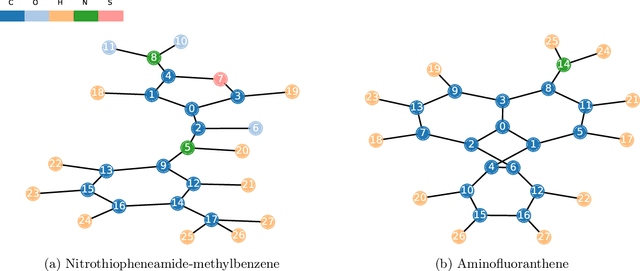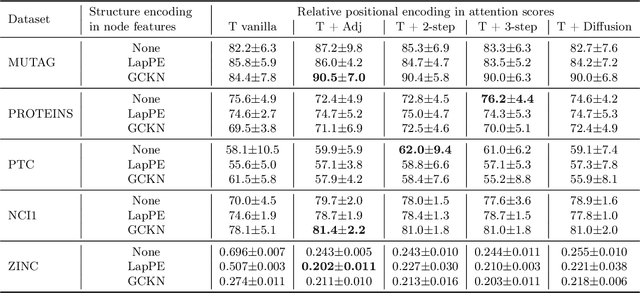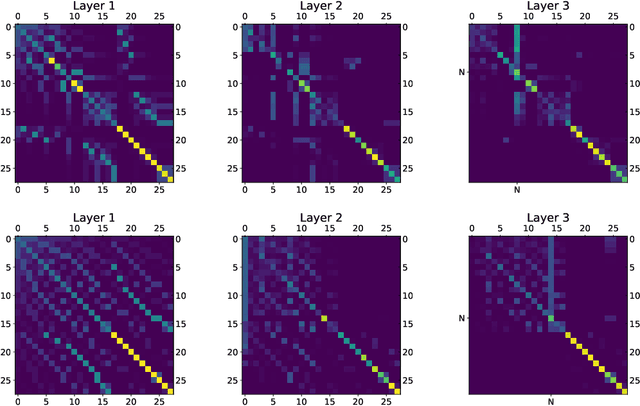Margot Selosse
Self-Attention in Colors: Another Take on Encoding Graph Structure in Transformers
Apr 21, 2023Abstract:We introduce a novel self-attention mechanism, which we call CSA (Chromatic Self-Attention), which extends the notion of attention scores to attention _filters_, independently modulating the feature channels. We showcase CSA in a fully-attentional graph Transformer CGT (Chromatic Graph Transformer) which integrates both graph structural information and edge features, completely bypassing the need for local message-passing components. Our method flexibly encodes graph structure through node-node interactions, by enriching the original edge features with a relative positional encoding scheme. We propose a new scheme based on random walks that encodes both structural and positional information, and show how to incorporate higher-order topological information, such as rings in molecular graphs. Our approach achieves state-of-the-art results on the ZINC benchmark dataset, while providing a flexible framework for encoding graph structure and incorporating higher-order topology.
GraphiT: Encoding Graph Structure in Transformers
Jun 10, 2021



Abstract:We show that viewing graphs as sets of node features and incorporating structural and positional information into a transformer architecture is able to outperform representations learned with classical graph neural networks (GNNs). Our model, GraphiT, encodes such information by (i) leveraging relative positional encoding strategies in self-attention scores based on positive definite kernels on graphs, and (ii) enumerating and encoding local sub-structures such as paths of short length. We thoroughly evaluate these two ideas on many classification and regression tasks, demonstrating the effectiveness of each of them independently, as well as their combination. In addition to performing well on standard benchmarks, our model also admits natural visualization mechanisms for interpreting graph motifs explaining the predictions, making it a potentially strong candidate for scientific applications where interpretation is important. Code available at https://github.com/inria-thoth/GraphiT.
 Add to Chrome
Add to Chrome Add to Firefox
Add to Firefox Add to Edge
Add to Edge